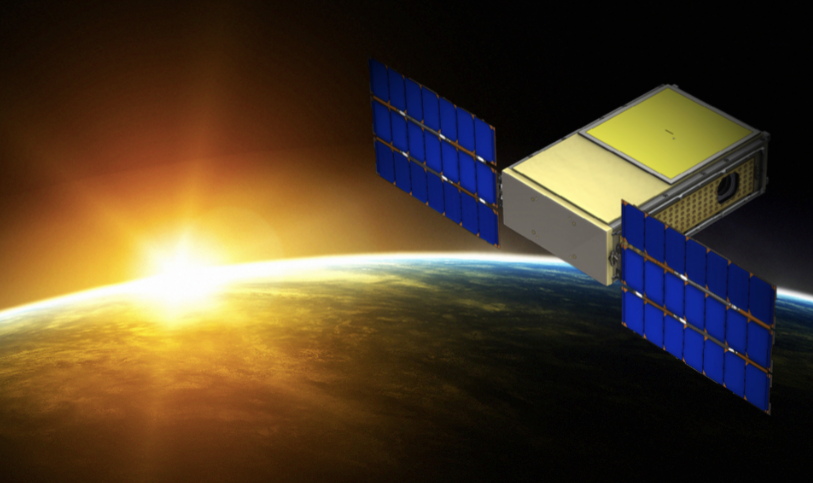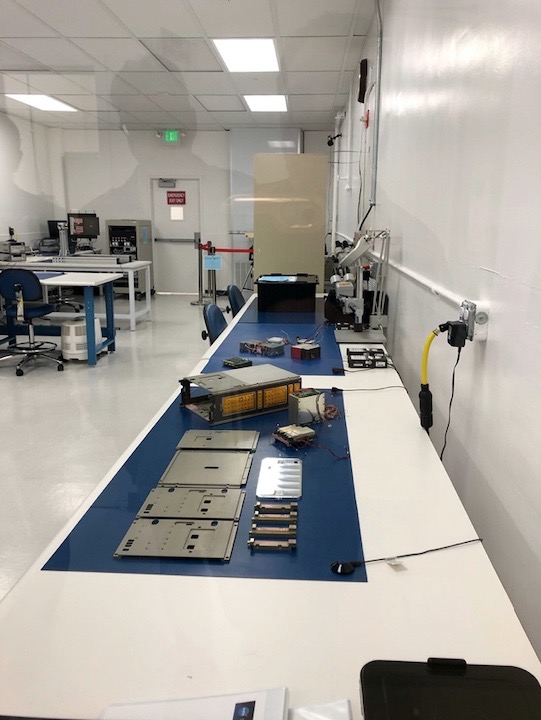
NASA is getting ready to launch living creatures to deep space for the first time in nearly five decades.
Agency engineers are putting together a briefcase-size spacecraft called BioSentinel, which will carry yeast cells into orbit around the sun to help scientists better understand the radiation environment beyond our planet's protective magnetic bubble.
BioSentinel is one of 13 cubesats flying aboard the Artemis 1 mission, which is currently targeted for mid-2020. That's 47.5 years after NASA last launched organisms beyond low-Earth orbit — the Apollo 17 astronauts, who reached the moon in December 1972. (Well, those are the last organisms launched on purpose, anyway; a few hardy microbes stow away on every robotic planetary mission.)
Related: Apollo 11 at 50: A Complete Guide to the Historic Moon Landing Mission
But Apollo 17 lasted less than two weeks. BioSentinel will gather data for nine to 12 months, opening a window on the long-term effects of deep-space radiation on DNA and DNA repair.
"This is new territory," Kimberly Ennico Smith, an astrophysicist at NASA's Ames Research Center, said during a tour of the Silicon Valley facility this past March.

Ames is the home base for BioSentinel. Indeed, the tour included several short talks by mission personnel and provided a glimpse of the partly assembled cubesat (behind glass, of course — no touching the space hardware).
Get the Space.com Newsletter
Breaking space news, the latest updates on rocket launches, skywatching events and more!
The 30-lb. (14 kilograms) satellite will carry two different varieties of the yeast Saccharomyces cerevisiae: the normal "wild type," which is quite radiation-resistant, and a mutant type, which is much more sensitive because it can't repair its DNA nearly as well.
BioSentinel team members will monitor the growth and activity of both varieties during the cubesat's time in deep space. They'll do the same with identical yeast payloads transported to the International Space Station, a microgravity environment with much lower radiation levels.
Related: Lunar Legacy: 45 Apollo Moon Mission Photos
Scientists will also track S. cerevisiae growth in two places here on Earth, Ennico Smith said: Ames and Brookhaven National Laboratory in New York state. At Brookhaven, scientists will expose the yeast to a high-radiation environment. Taken together, the data haul should help the team tease out which effects are due to radiation and which result from microgravity or other factors.
S. cerevisiae is a good model organism for this work, BioSentinel team members said.
"Importantly, yeast's DNA damage-repair process is highly similar to that of humans, making it a robust translational model," NASA officials wrote on the BioSentinel fact sheet. "BioSentinel's results will be critical for interpreting the effects of space radiation exposure, reducing the risk associated with long-term human exploration and validating existing models of the effects of space radiation on living organisms."
BioSentinel is in the assembly home stretch: The cubesat must be completely finished by late October, mission team members said during the Ames tour. Then comes prelaunch prep and integration into NASA's Space Launch System (SLS) megarocket, which will fly for the first time on Artemis 1.
NASA is developing the SLS to take people and payloads to deep-space destinations like the moon and Mars. The rocket is a key part of NASA's long-term vision, along with a crew capsule called Orion.
That craft is the primary payload on the Artemis 1 flight, which was previously known as Exploration Mission-1. (NASA recently changed the name to match that of the agency's new crewed lunar-exploration program.) SLS will launch Orion on an uncrewed jaunt around the moon, in a performance test for both the rocket and the capsule.
If everything goes well, the next flight of the duo — Artemis 2, in 2023 — will be a crewed mission that sends four astronauts on a journey around the moon.
Artemis 2 will launch a year after the first piece of NASA's small, moon-orbiting space station goes aloft. This outpost, which the space agency calls the Gateway, will be key to the overall Artemis vision, serving as a jumping-off point for crewed and uncrewed sorties to the lunar surface.
Lots of science work will also take place on the Gateway — including, it's safe to assume, more research into the effects of radiation on living systems.
"We should have a lot more of these experiments [like BioSentinel] on the Gateway," Ennico Smith said.
The other 12 cubesats flying aboard Artemis 1 are a diverse lot. For example, the Lunar Flashlight and Lunar IceCube missions will hunt for signs of water ice on the moon, and Near-Earth Asteroid Scout will use a solar sail to rendezvous with a space rock.
- Space Radiation Threat to Astronauts Explained (Infographic)
- Can NASA Really Put Astronauts on the Moon in 2024?
- Lunar Orbital Platform-Gateway: NASA's Proposed Lunar Space Station
Mike Wall's book about the search for alien life, "Out There" (Grand Central Publishing, 2018; illustrated by Karl Tate), is out now. Follow him on Twitter @michaeldwall. Follow us on Twitter @Spacedotcom or Facebook.
Join our Space Forums to keep talking space on the latest missions, night sky and more! And if you have a news tip, correction or comment, let us know at: community@space.com.

Michael Wall is a Senior Space Writer with Space.com and joined the team in 2010. He primarily covers exoplanets, spaceflight and military space, but has been known to dabble in the space art beat. His book about the search for alien life, "Out There," was published on Nov. 13, 2018. Before becoming a science writer, Michael worked as a herpetologist and wildlife biologist. He has a Ph.D. in evolutionary biology from the University of Sydney, Australia, a bachelor's degree from the University of Arizona, and a graduate certificate in science writing from the University of California, Santa Cruz. To find out what his latest project is, you can follow Michael on Twitter.









